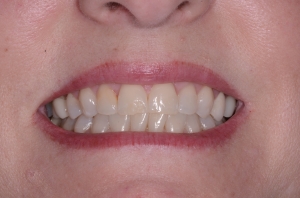
Welcome to your mouth! A healthy mouth is necessary for a healthy life. You might be surprised how many different parts work together to make your mouth function. Read more below from Dr. Saydyk in Gilbert to get an in-depth look at the human mouth and how it works.
Teeth
The look and function of your teeth make your first impression and impact your daily life and confidence. You’d also be lost (and very hungry) without these shining beauties. Adults have 32 teeth and babies have 20. The four different kinds of teeth you have are:
- Incisors in the front that bite and cut tough food like meat
- Canines tear food, like a big piece of bread off the loaf
- Premolars tear and crush food like salad greens
- Molars grind everything down small enough for you to swallow and digest
The white, visible part of your tooth is called the crown and the invisible part under your gums is called the root. All your teeth have three layers, and all three are very important:
- Enamel is the outer layer that is the chewing surface and protects the layers below.
- Dentin is the next layer of hard tissue, fed by blood from the pulp.
- Pulp is the core of the tooth made of soft nerve tissue and blood vessels.
If tooth decay breaks down your enamel enough to reach the dentin and pulp, your tooth can die.
Gums
Also called gingivae, gums are the soft tissue that covers the roots of your teeth and jawbone. Healthy gums are pink and help keep your teeth in place. Unhealthy gums may tend to bleed, appear discolored, and feel extremely sensitive. Healthy gums ensure healthy teeth and a healthy body overall.
Tongue
You rely on this muscle to help you enjoy your food! Mostly known for hosting all of your taste buds, the tongue takes up the most space in your mouth and is also important for healthy chewing, swallowing, speaking, and cleaning the mouth.
Uvula
We couldn’t forget this odd little guy. The uvula is that bell-shaped bit of tissue that hangs just above your throat – the “hangy ball” if you will. Scientists do not fully understand the uvula, but it is thought to help food move down your throat and assist with saliva production.
What about the rest?
Of course, the inside of your mouth is completely supported by the muscles and bones around it. Your jawbone, cheeks, and lips support your mouth to make chewing and speaking possible. Those bones and muscles are connected to the rest of your face, head, and neck in a complex system of tendons and nerves in your jaw joint, known as the temporomandibular joint or TMJ. Your mouth is truly a wonderful machine and it is worth the time and attention to keep all parts in working order. To take care of your mouth and all its parts, make an appointment with StoneRidge Dental in Gilbert today!
Sources



